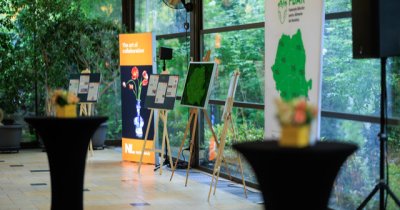According to experts, trees planted in urban areas can help lower temperatures by anywhere from 2 to 10 degrees Celsius, depending on geographical factors, as well. At the same time, they also claim that over 80% of Europe's population say that reaching green spaces within their cities is not a difficult task.
Euronews.green, however, reports that there are certain inequalities between European countries. Thus, Danish people unanimously say that green spaces are easy to reach for them, whereas in Portugal, only 77% of the population says they are close to tree-filled urban areas and in Malta, just a touch over half of the population is close to green zones.
Matilda van den Bosch, a senior researcher at the Barcelona Institute for Global Health, says that green spaces could be promoted by highlighting their benefits, first and foremost.
"We know that it doesn't work to give one-sided, top-down information saying ‘ok, this is good for you’, if people don't perceive it that way", she explained.
Besides the fact that they can cool the air, while giving us more oxygen, trees also contribute to our happiness and overall well-being. They are also said by specialists to lower the risk of cardiovascular disease.
How can authorities plan more sustainable cities
Urban planning-experts say that we need a good plan to extend green spaces and not just plant trees randomly. Professor Cecil Konijnendijk, director of Nature Based Solutions, developed a special rule, called 3-30-300, which is aimed at helping authorities plant trees easier and more efficiently around the city they manage.
Firstly, all people should be able to see at least three trees from the windows of their home and then, at a neighborhood level, trees should provide the population with at least a 30% shade-covered area. Lastly, as per the recommendations of the World Health Organization, no one should live further than 300 meters from an at least one-hectare-sized park.
Barcelona is one of Europe's cities who took these rules and drove them to the next level, so that from 2016 onwards, the authorities have closed off a number of streets to the cars, while creating parks or green spaces at the intersection of others
Konijnendijk said that "I lived in Barcelona for the previous two and a half years, and my street, for example, just got dug up and the cars were taken out and trees were put in. So it is really happening and it's very radical."
There was some opposition at first, especially from the stand-point of businesses, but at the same time, the prices of apartments and homes went up. This, experts say, is why an entire city needs to be developed like a green area, rather than just a few spots, so that a balance can exist.
Stockholm is another good example of how the population has easy access to green spaces, as 80% of the population can easily reach these zones, while in Greece, only 20% of the dwellers of Heraklion live in the proximity of such spaces.
Eastern Europe in general is facing the same issue, as urban planners haven't kept green spaces in mind too much when building. By having green spaces on the outside of the city, their argument was that they could keep building on the inside, so that when people feel the need of fresh air, they just get outside the city.
"Urban planners are used to planning for cars rather than people, and seeing the world as it's developing today, it's simply not going to hold", said van den Bosch.
 Mihai - Cristian Ioniță
Mihai - Cristian Ioniță












Any thoughts?